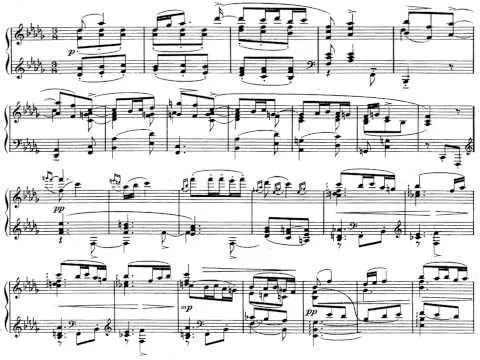Composed between 1903 and 1905, Ravel's Sonatina was written in a creative period characterized by poetic influences (Shéhérazade), or pictorial influences (Miroirs). The first movement - Modéré - was composed in 1903 for a modest composition competition, launched by a musical weekly, which required the composition of a first part of sonatina, not exceeding 75 bars of duration.
The prize was 100 Francs, one of the editors of Paris Weekly Critical Review, Michel Dimitri Calvocoressi, friend of Ravel, encouraged him to compete. No one submitted bids and Ravel was the only competitor, but he did not win, having been disqualified because Modéré, the first move, had 86 bars, eleven more than what was stipulated in the rules of the competition.
Two years later, in 1905, Ravel composed the two remaining works, "Mouvement de menuet", and "Animé", a virtuosic tocata.

Modéré
The first movement in F minor is written in the rigor of form, it follows an absolutely traditional modulation plan, as if it were intended to prove to the jury that he knew and mastered orthodox rules of composition perfectly.
The first theme is exposed at the beginning, the second theme at 25 seconds. At 37s a bridge is made for repetition of both themes starting at 57 seconds. In 1:37 the bridge to development, which begins on the first theme in 1:52, and extends to the second in 2:10. At 2:30 a recapitulation of the exposition of both themes is done. The coda is performed at 3:10 which brings us to the end of this movement.
Menuet Mouvement
The second movement, in D flat major, presents itself with the title "Mouvement de Menuet", is defined more like a distant and refined idea of a form of dance under the evocation of the memory of the French clavichordist, than as a real embodiment of this dance.
The first theme appears twice right from the start, a second theme starts at 4:25, this can also be interpreted as a variation of the first, with the piano performing ornate melodies. At 5:10 it featured a main section in F # minor, only 14 bars, which leads us to repeat the first theme at 5:36. The coda started at 5:59 in the B minor key. Returns to its original hue at 6:28 and announces the end of the piece.
Tocata
Finally, the "Tocata" is technically the most challenging of the three movements of this Sonatina. Written in the "rondo" form, it is abundant in energy, leading the work to a brilliant conclusion.
After three introductory bars, at 6:52, the first theme takes voice at 6:56. In 7:29 comes the second theme. At 8:08 the first theme returns under a different accompaniment from the first exposure. And exploring new texture, like the melody in the bass at 8:28. In 8:41 the second theme also returns in modified form. At 8:58 a new theme is exposed. At 9:57 the first theme returns modulated, and under new follow-up. At 10:03 starts a coda that takes us to the end of the play, and the sonatina.
I hope you enjoy it, the recording was performed in 1957 by pianist Friedrich Gulda (1930-2000) at Austrian Broadcasting Studios in Vienna.
A great hug!
Guilherme Faquetti
March 26, 2019

The classical music community at #classical-music and Discord. Follow our community accounts @classical-music and @classical-radio. Follow our curation trail (classical-radio) at SteemAuto Community Logo by ivan.atman

ptgram power: | faça parte | grupos | projetos | membros |
| ptg shares | trilha premium | fórum externo | fórum na blockchain |
siga: | @brazine | @brazilians | @camoes | @coiotes | @dailycharity | @imagemvirtual | @msp-brasil | @ptgram-power |
References
https://www.francemusique.com/classical-music/10-little-you-perhaps-do-not-know-about-maurice-ravel-15638
http://www.casadamusica.com/artistas-e-obras/obras/s/sonatina-maurice-ravel/#tab=0
https://en.wikipedia.org/wiki/Sonatine_(Ravel)
https://pt.wikipedia.org/wiki/Rond%C3%B3
http://www.arkivmusic.com/classical/album.jsp?album_id=95157
Sponsored ( Powered by dclick )
EARN STEEM BY STELLING AUTOMATICALLY YOUR VOTING POWER.
WITH SMARTSTEEM YOU CAN AUTOMATICALLY SELL YOUR VOTE...